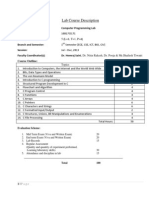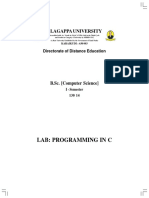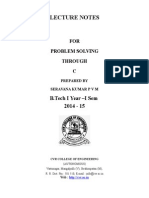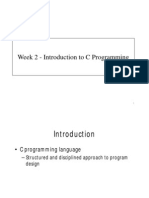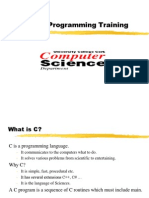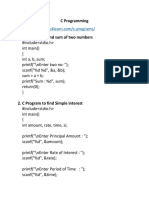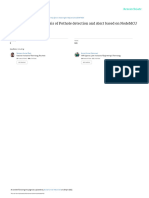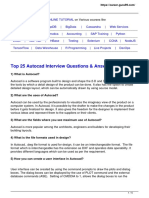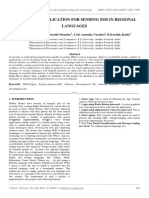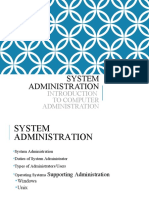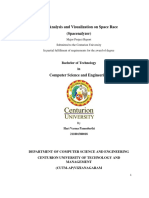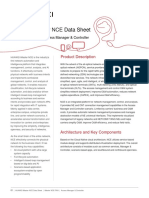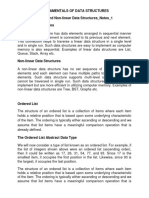0% found this document useful (0 votes)
18 views10 pagesCs3271 - Programming in C Laboratory
The document outlines the objectives and outcomes of the CS3271 Programming in C laboratory course, focusing on various programming constructs and applications. It includes a list of experiments covering I/O statements, decision-making constructs, loops, arrays, strings, functions, recursion, pointers, structures, and file processing. Additionally, it provides a list of textbooks and sample programs demonstrating basic C programming concepts.
Uploaded by
Ponni SCopyright
© © All Rights Reserved
We take content rights seriously. If you suspect this is your content, claim it here.
Available Formats
Download as PPTX, PDF, TXT or read online on Scribd
0% found this document useful (0 votes)
18 views10 pagesCs3271 - Programming in C Laboratory
The document outlines the objectives and outcomes of the CS3271 Programming in C laboratory course, focusing on various programming constructs and applications. It includes a list of experiments covering I/O statements, decision-making constructs, loops, arrays, strings, functions, recursion, pointers, structures, and file processing. Additionally, it provides a list of textbooks and sample programs demonstrating basic C programming concepts.
Uploaded by
Ponni SCopyright
© © All Rights Reserved
We take content rights seriously. If you suspect this is your content, claim it here.
Available Formats
Download as PPTX, PDF, TXT or read online on Scribd
/ 10
















